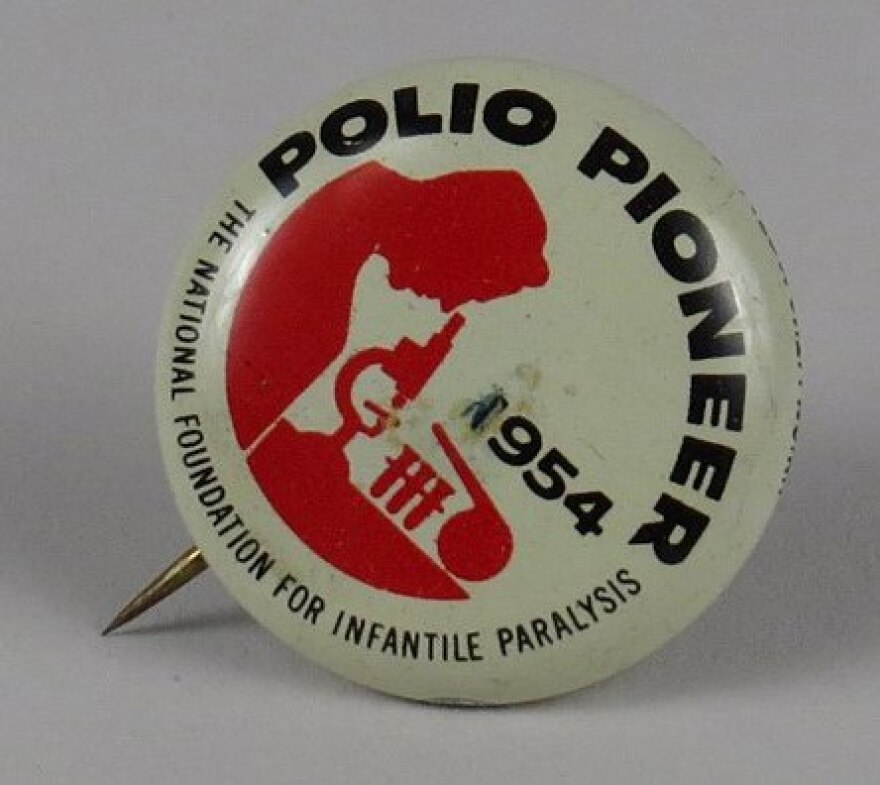After retiring from Berkshire Farm Center, Leona Scarpinato was a volunteer at the National Archives in Pittsfield, where she assisted others in researching their family histories. She lives in Columbia County where she writes about memories of her own life, as well as stories of her ancestors, for her children and future generations.
Polio Pioneer
It was not unusual for a child growing up in the early nineteen fifties, to get measles, German measles, mumps or chickenpox. Before the advent of vaccines, it was assumed that children would get these childhood diseases and many healthy children were deliberately exposed to sick children to get the disease while they were young.
But there was one childhood disease that was feared by parents and that was polio, also known as infantile paralysis, since the virus mostly struck young children.
I enjoyed school and I looked forward to the new things I would learn. Near the end of the school year, my thoughts were more of summer fun than schoolwork; as I looked forward to carefree summer days, picnics in the park, swimming at the town beach, and riding my bike with friends. We spent the days outside from morning till suppertime, ate quickly and went outside again to watch the arrival of lightning bugs as it started to get dark.
But for all the joys of summer, we lived with fear. Our mothers told us to stay away from puddles and never step in them. There would be days during the worst heat waves when the beaches and pools would be closed. It was believed the number of cases of polio climbed during the hottest days of summer, and swimming increased the chance of contracting the disease.
You might hear of a child's getting sick and that it might be polio. During the summer of 1953, I heard the word “polio” often. I don’t know if it was being talked about more than usual or if I, at the age of almost 7, was more aware of grownups' conversations. I had seen pictures of iron lungs; large, scary machines where children with polio were placed so they could breathe. The words “St. Charles” would be spoken in a hushed voice when a child was admitted to a hospital; it was a hospital for crippled children. Although the polio virus was often no worse than other viruses, one strain caused paralysis, withered limbs, and death. I had seen children, with braces on their legs, using crutches or being pushed in wheelchairs, and was told they had had polio. So summer, time of fun, was also a scary time for parents and children, as the specter of a dread disease hovered over us.
The number of cases of polio peaked in the early fifties; over 57,000 in 1952. Jonas Salk and his colleagues were making progress on a polio vaccine and the first national trial was scheduled for 1954, and the decision was made for children ages 6 to 8 to participate. I was 7 years old and in the second grade when the trials were conducted. My elementary school in Lindenhurst, New York participated and my parents consented to my being in the trial. 1.8 million children took part in forty-four states, Canada and Finland. 440,000 received the killed virus vaccine, 210,000 a placebo, and 1.2 million were the control group receiving nothing. They were observed to see if they contracted polio.
The day of the first shot the nurse came into my classroom and called out the names of the children who would be receiving shots. We lined up and were led down the hall to the gym. I did not know then that I was taking part in a very important event --- the largest field trial ever conducted. I was apprehensive as I waited my turn. I noticed the classmates ahead of me were given a piece of candy after having their shots; distracted by the thought of a piece of candy, I bravely presented my left arm and got my shot and a piece of candy. Over the next few weeks I got two more shots and two more pieces of candy.
The children received cards and pins proclaiming us Polio Pioneers; parents were notified whether their children received the vaccine or the placebo. I don't know if I got the vaccine or placebo. On April 12, 1955, the long awaited announcement was made “The vaccine works. It is safe, effective and potent.” The trial was a success, Salk polio vaccine was approved and became available for distribution to the general public. Two years later, the number of cases of polio had dropped to 5,600 and by 1961 there were fewer than 200. The last case of polio in the United States was reported in 1979. There are only three countries today that still have outbreaks of the disease. Today most children are vaccinated against polio. Their parents probably never heard of the Polio Pioneers of 1954, those children who participated in an experimental drug trial with the consent of their parents. How difficult it must have been for those parents to make such a decision. Should they allow their children to be inoculated with an experimental vaccine? Or should they risk their children getting polio that could leave them crippled?
I’m thankful to the millions of parents whose children took part in the trial, which resulted in a successful vaccine that reduced the incidence of the polio virus worldwide. And I’m proud to have been a Polio Pioneer.





